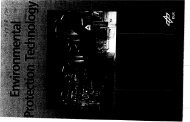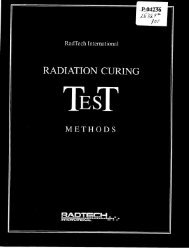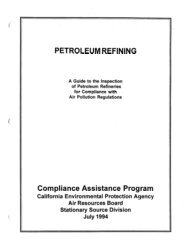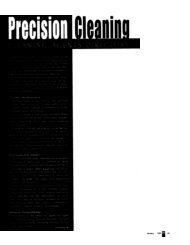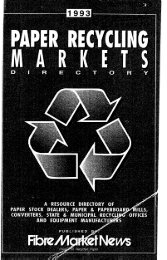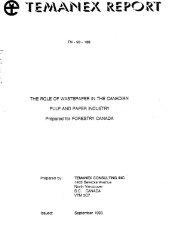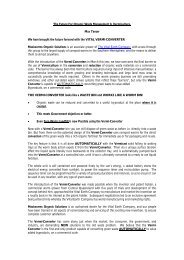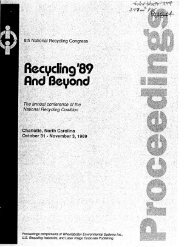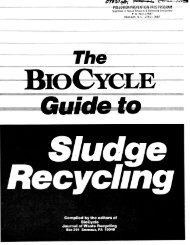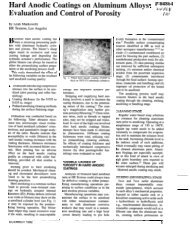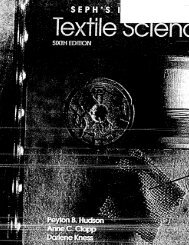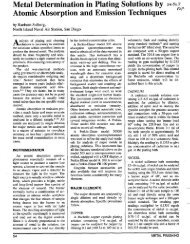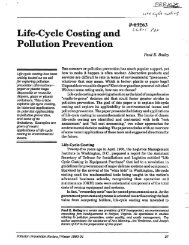Electronic Parts/Guidelines - infoHouse
Electronic Parts/Guidelines - infoHouse
Electronic Parts/Guidelines - infoHouse
Create successful ePaper yourself
Turn your PDF publications into a flip-book with our unique Google optimized e-Paper software.
7.0 Life Cycle Assessment<br />
7.1 Scope<br />
This section addresses the complicated issues in understanding the impacts of packaging materials on<br />
the environment through Life-Cycle Analysis. LCA is a method of evaluating the environmental attri-<br />
butes of a product and/or package by listing and measuring its energy and resource use and then<br />
quantifying its environmental impact of emissions, effluents and solid wastes throughout the course of<br />
its life cycle.<br />
7.2 Purpose<br />
To add an environmental component to decision making when designing a package is to add a mind-<br />
boggling array of topics to the decision. These topics vary from global ozone depletion to ancient<br />
forests to endangered species to landfilling. This section will not provide all the answers for making<br />
the best environmental decision. The purpose of this section is to show the complexity associated with<br />
trying to determine all the environmental impacts of various materials, and the problems with com-<br />
paring one material to another.<br />
I 7.3 The Three "1"s of Life Cycle Assessment<br />
1 What LCAs cannot do Is determine the ultimate environmental impact of a product or package on the<br />
I environment. Identification of all impacts is a lengthy and arduous process. But even more difficult is<br />
I evaluating and comparing different types of impacts--those affecting air quality compared to those<br />
I affecting ground water, for example. So far, there is no consistent practice or agreement on how such<br />
I arbitrary "apples to oranges" comparisons may reasonably be made.<br />
Life cycle assessment consists of three main components sometimes called the three "1"s: inventory<br />
analysis, impact analysis and improvement analysis. In a study conducted for the U.S. Environmental<br />
Protection Agency (EPA) by Battelle and Franklin Associates Ltd., the three "1"s are described as<br />
follows:<br />
Inventory analysis is an "objective, data-based process of quantifying energy and raw material requlre-<br />
ments. atmospheric emissions, waterborne emissions and solid wastes for the entire life cycle of a<br />
product, process or activity. In the broadest sense, inventory analysis begins with the raw material<br />
extraction and continues through the final product consumption and disposal. This component of life<br />
cycle assessment is currently the most well developed with a methodology that has-been evolving over<br />
a 20-year period".<br />
Impact analysls is "a technical, quantitative, and/or qualitative process to characterize and assess the<br />
effects of the resource requirements and environmental loadings (atmospheric and waterborne emissions.a~nd<br />
sol~id wastes) identified in the inventory stage. The assessment should address both ecological<br />
and human health risks, as well as such other effects as habitat modification and heat and noise<br />
pollutlon."<br />
Improvement analysis is a "systematic evaluation of the needs and opportunities to reduce the environ-<br />
mental burden associated with energy and raw material use and waste emissions through the life<br />
cycle of a product, process or activity. This analysis may include both quantitative and qualitative<br />
measures of improvements".<br />
Llfe Cvcle Assessment 55



